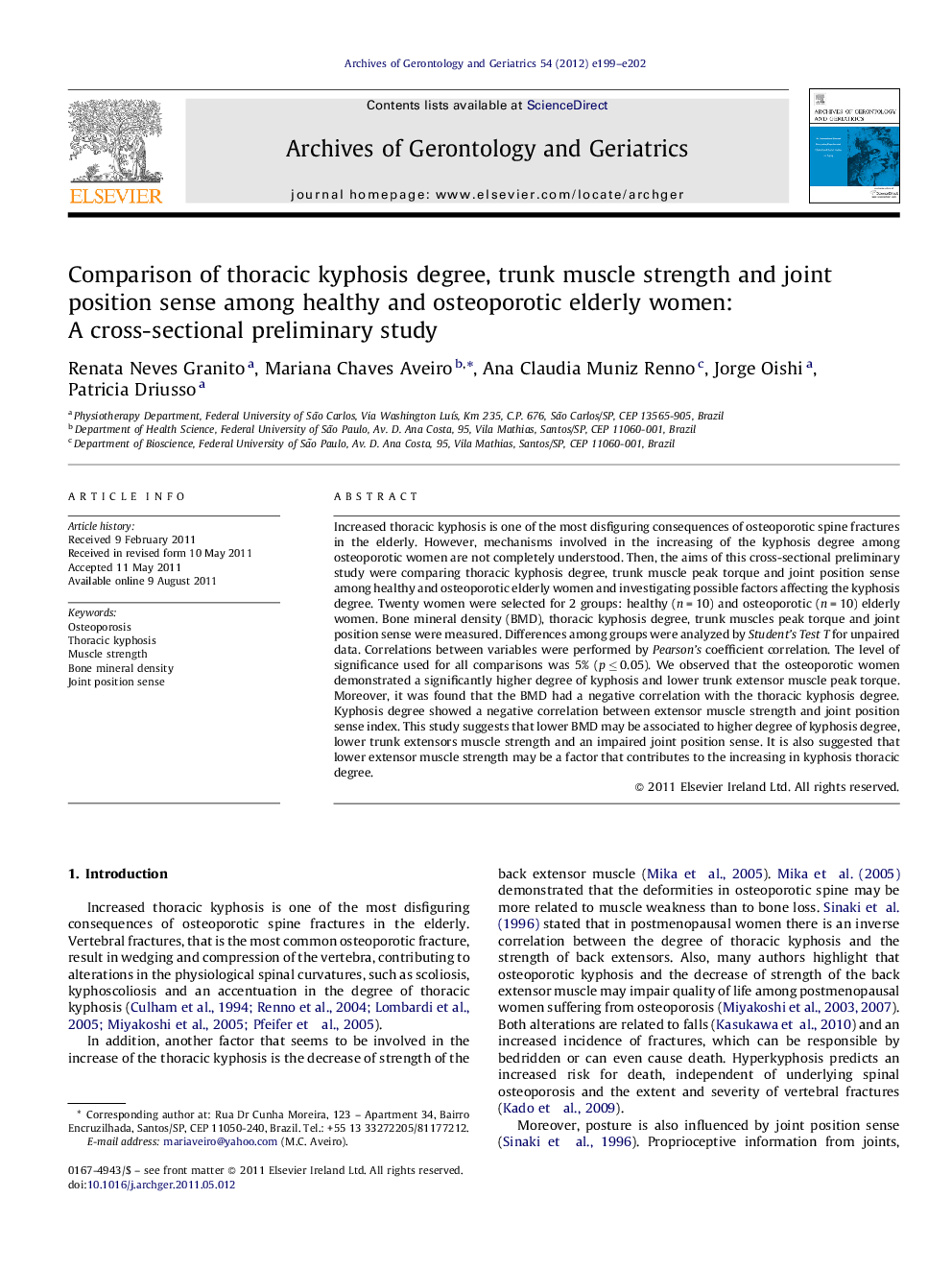| Article ID | Journal | Published Year | Pages | File Type |
|---|---|---|---|---|
| 1903024 | Archives of Gerontology and Geriatrics | 2012 | 4 Pages |
Increased thoracic kyphosis is one of the most disfiguring consequences of osteoporotic spine fractures in the elderly. However, mechanisms involved in the increasing of the kyphosis degree among osteoporotic women are not completely understood. Then, the aims of this cross-sectional preliminary study were comparing thoracic kyphosis degree, trunk muscle peak torque and joint position sense among healthy and osteoporotic elderly women and investigating possible factors affecting the kyphosis degree. Twenty women were selected for 2 groups: healthy (n = 10) and osteoporotic (n = 10) elderly women. Bone mineral density (BMD), thoracic kyphosis degree, trunk muscles peak torque and joint position sense were measured. Differences among groups were analyzed by Student's Test T for unpaired data. Correlations between variables were performed by Pearson's coefficient correlation. The level of significance used for all comparisons was 5% (p ≤ 0.05). We observed that the osteoporotic women demonstrated a significantly higher degree of kyphosis and lower trunk extensor muscle peak torque. Moreover, it was found that the BMD had a negative correlation with the thoracic kyphosis degree. Kyphosis degree showed a negative correlation between extensor muscle strength and joint position sense index. This study suggests that lower BMD may be associated to higher degree of kyphosis degree, lower trunk extensors muscle strength and an impaired joint position sense. It is also suggested that lower extensor muscle strength may be a factor that contributes to the increasing in kyphosis thoracic degree.
